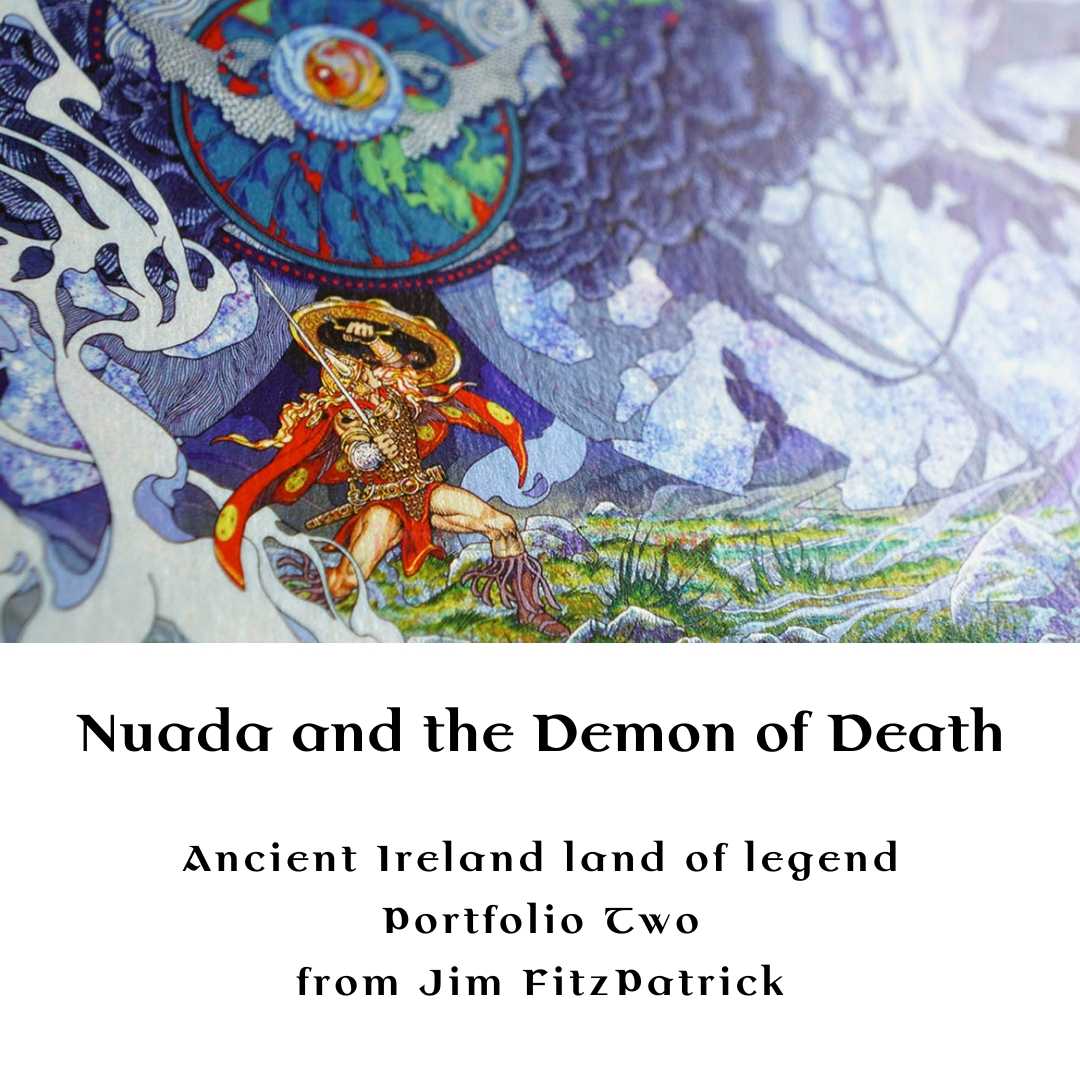
This work started when I lived in Connecticut, USA, back in the late 70s, and finished when I moved back to Ireland. It was one of the most difficult to complete of the more intense works in my book, ‘The Silver Arm’.
It depicts the moment Nuada, High King of Ireland, restored to the kingship by the creation of an arm of silver to replace the arm lost in battle against the Fomor enemy, comes face to face in mortal combat with a demon summoned by Balor of the Evil Eye.
I enjoy dealing with abstraction, so rather than represent a more predictable and familiar demonic form, I went for this more obtuse, globular, shape-changing nightmare of ancient demonic power, emphasising the colossal scale of it towering over Nuada as it consumed him and ended his life.
This work was intended for a double-page spread in my book, ‘The Silver Arm’, volume two of an intended trilogy, published by Paper Tiger worldwide.

The Silver Arm
The Silver Arm is the story of the Second Battle of MoyTura, as recorded in, and translated from, the manuscript ‘Lebor Gabala Eireann’, ‘The Book of the Invasions of Ireland’.
‘As I watched I saw the terrible shadow crouch closer over Nuada. Out of the darkness of his terror, the king raised his Sword of Light and again held it against his bull-horned helmet. This time the crimson light infused his silver arm and gave him a magical strength of limb.
Then, a great battle frenzy seized Nuada, King of the Tuatha Dé Danann, and he rose in all the splendour of his father, the Sun God, up into the sky where Balor’s demon god awaited him. With his Sword of Light, Nuada severed the tentacles of darkness; whirling his weapon in fiery crescents, he lopped off claws and limbs from the huge and terrible creature which filled the heavens with its swirling, knotted coils.
However, even as he seemed to destroy the monster, it changed in shape and substance, dissolving into some foul broth which boiled and clotted into myriad forms which writhed and knotted together in dripping slime. Even the Sword of Light was powerless against the bubbling source of evil which would never be quenched until the end of the world.
Nuada felt cold grip his heart and in his mind nightmare visions of unnameable demons and forbidden gods became obscene reality. At last, he knew there was no hope of victory; all that was left to him was to bear witness to the life and truth that he had managed to forge during his brief time on Earth.
And so, as the demon slowly engulfed him, he cried again and again to his god, the Sun, to give light and warmth to his people, the Tuatha Dé Danann, the children of Nemed, so that their hearts would be brave, their spirit leap high, and their children’s children run free in the green homeland, their own country of Éireann.’
-The Silver Arm.
The Artwork
Artistically, the painting illustrating the epic contest between the dark forces of the Fomorian warlord, Balor of the Evil Eye, is one of my better works, and it still looks amazing after the passage of time.
I wanted a very non-human but non-fantasy art cliche take on the supernatural being summoned by Balor, but also to retain the Evil Eye element, to emphasise the scale of Nuada as he faced this massive, ethereal monstrosity summoned from the depths to face and destroy him.
For this epic work I sketched out my ideas in detail in pencil.

Once the pencil drawing was finished, I rendered everything in pen and ink.
I recorded this pen and ink drawing before it was painted, and there are also many less detailed sketches for this work, probably in a large folder up in my attic.


Reproductions
Created for The Silver Arm, it was later republished in my 1984 book, Erinsaga, which also includes a detailed breakdown of the artwork with the pencil art, and pen and ink artworks.
In 2024, it was reproduced for the first time as a print as part of the Ancient Ireland Land of Legend Portfolio Two and printed in two formats. The main print is the best reproduction of it ever on stunning Hahnemühle Metallic Rag paper. And for the special edition, there is a double-size folded print of the line art.



